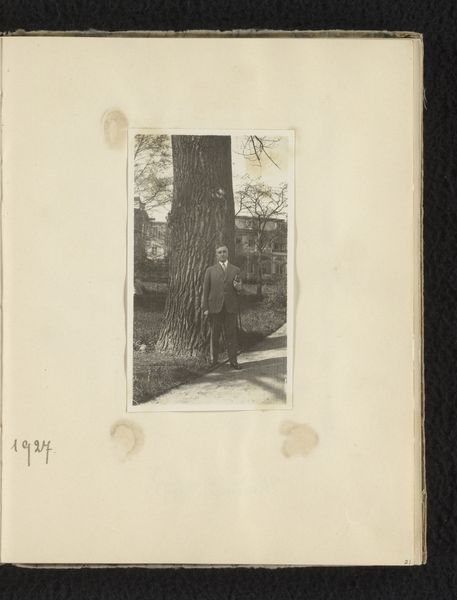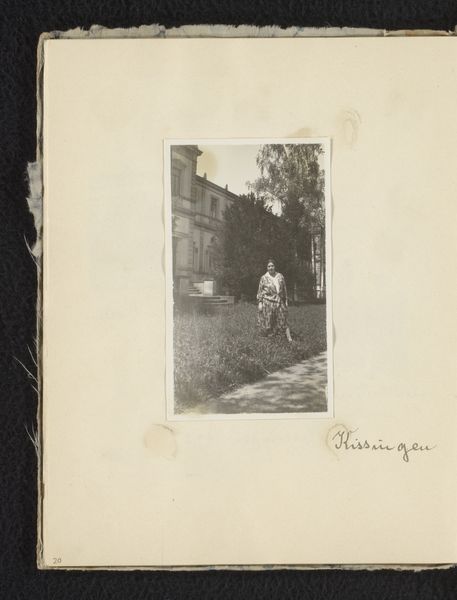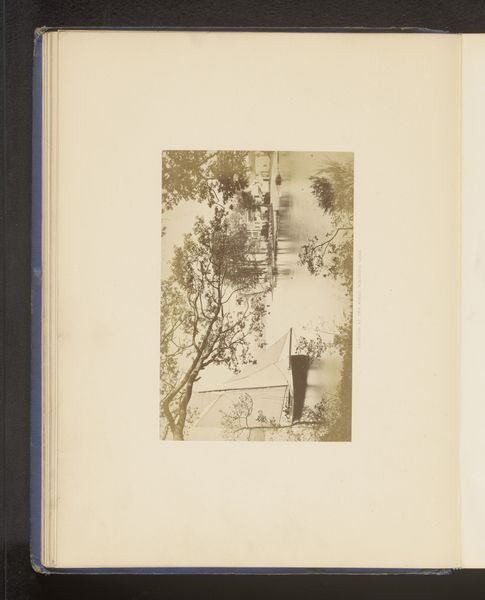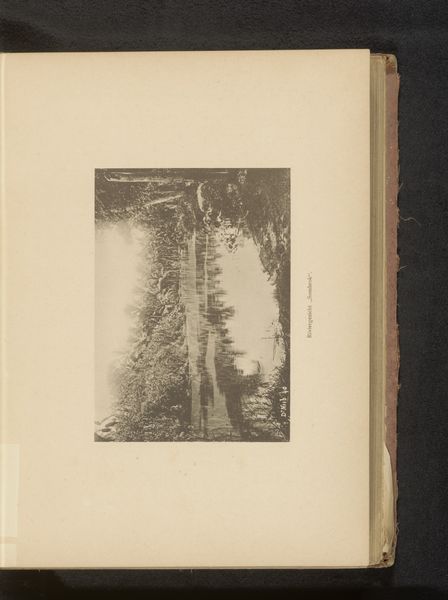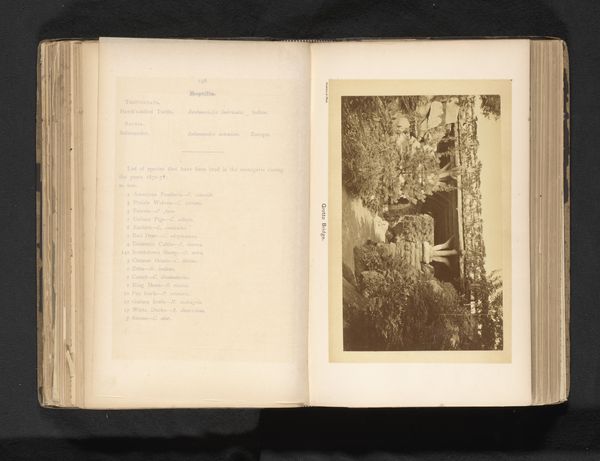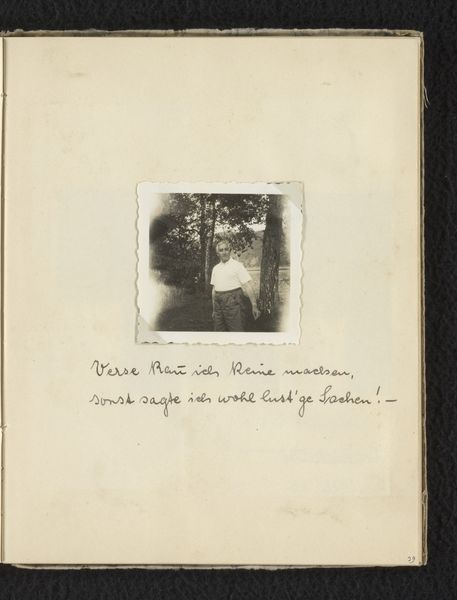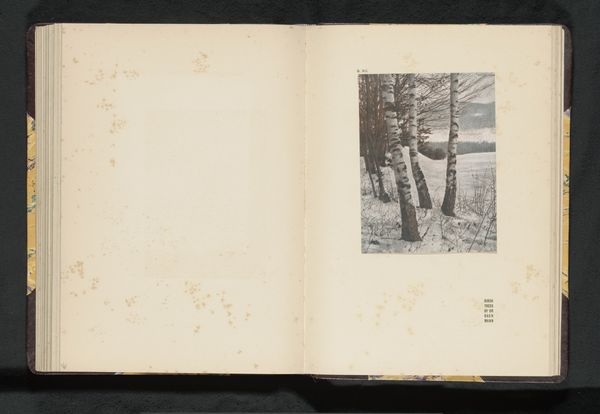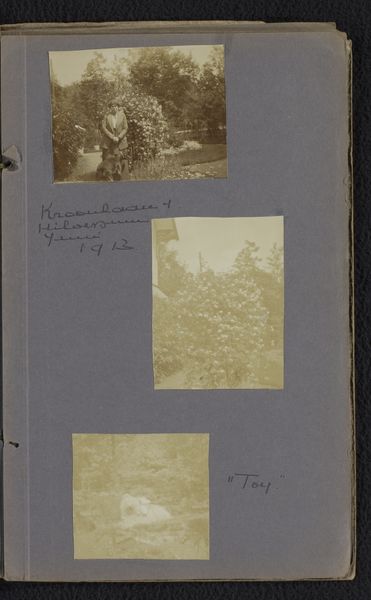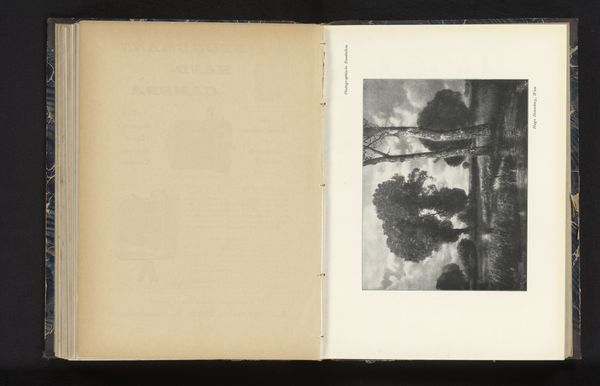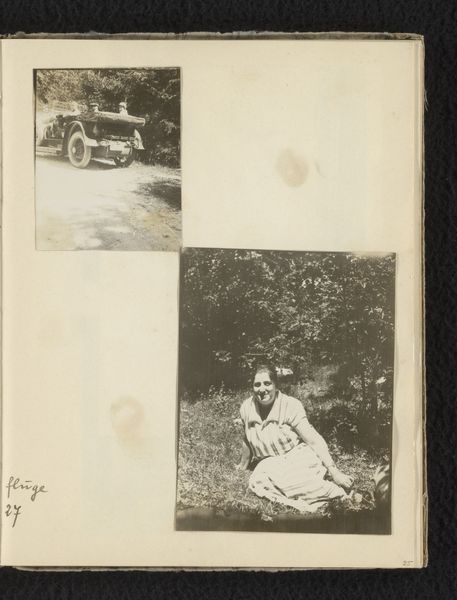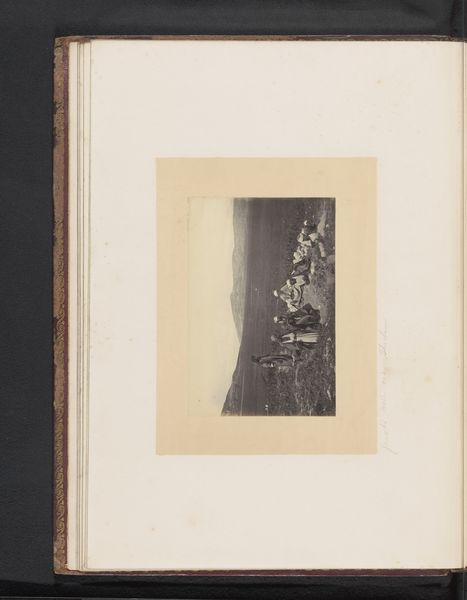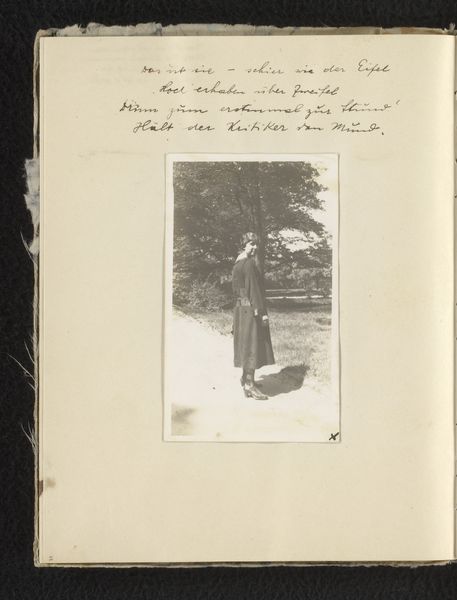
Else Wachenheimer-Moos naast een grote boom, 1927, Tscham Koria (Bulgarije) 1927
0:00
0:00
photography, gelatin-silver-print
#
portrait
#
landscape
#
photography
#
coloured pencil
#
gelatin-silver-print
#
realism
Dimensions: height 119 mm, width 84 mm, height 205 mm, width 160 mm
Copyright: Rijks Museum: Open Domain
Curator: We're looking at a gelatin-silver print titled "Else Wachenheimer-Moos naast een grote boom, 1927, Tscham Koria (Bulgarije)" by Tscham Koria. It’s dated 1927. Editor: My first impression is one of quiet introspection. There's a certain solemnity in the figure's stance against the massive tree, and the grayscale adds a layer of timelessness. Curator: Indeed. Let's consider the socio-historical context. Photography in the 1920s offered new possibilities for representing individuals and their relationships to place, to nature, and especially notions of personal identity. In the Wachenheimer family profile, what strikes you most about this picture? Editor: What interests me is how the artist has positioned Else. She's framed within the larger landscape but not overwhelmed by it. The setting in Tscham Koria might suggest an intentional placing within or seeking of nature at a time when new social theories saw the rural landscape as feminine or as pure space that offers something "true" in a new era of accelerated progress. The tree almost serves as a symbolic protector. Curator: That resonates with contemporary dialogues surrounding identity, particularly within marginalized communities. Nature has frequently been used to connect social status to more positive or at least neutral states of being, away from the turmoil of daily existence. Else appears grounded, resilient. Her positioning within this larger natural history of nature suggests she is as much part of it as the land. Editor: Exactly. This portrait challenges the historically masculine genre of landscape, in my opinion. Whose story gets told, where, and by whom shapes the meanings we draw, doesn't it? It gives viewers the ability to imagine the role she plays or could play in such natural settings. Curator: Precisely, this resonates deeply with questions of visibility and agency within marginalized voices. Here, Else isn't just represented; she occupies and seemingly owns that space. Editor: Ultimately, it is an important representation of one figure finding solace and identity in an open setting that allows that figure to have her portrait alongside elements of a beautiful nature. The image prompts us to rethink narratives of the time and the politics of photography in that context. Curator: Agreed. A powerful glimpse into personal resilience and agency presented through photography.
Comments
No comments
Be the first to comment and join the conversation on the ultimate creative platform.
